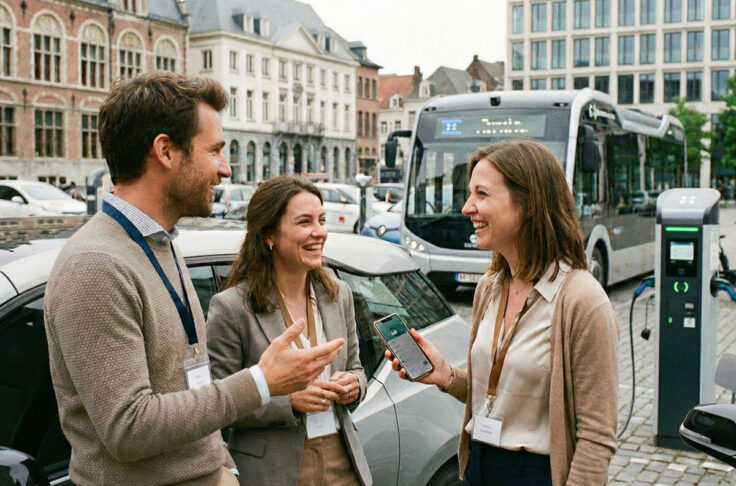Embracing the Local Mobility Culture
Summary
Each city has its own mobility culture that influences how people choose to get around, and this is an important factor shared mobility operators need to work with in order to truly meet consumers’ mobility needs.

What makes people choose to take public transit over a car? Or a scooter over walking? While distance plays a factor, at the root of this decision is the influence of the city’s mobility culture. Local mobility culture, by our definition, is the built-in preference of how individuals decide to travel from A to B within a city. This preference comes from a culmination of factors such as social norms, urban landscape, and transportation infrastructure.
Local mobility culture is important to look at because it indicates how people will choose to get around the city. Obvious examples include USA and the car-centric focus, compared to the Netherlands with a bike-centric atmosphere. When it comes to bringing shared mobility to cities, understanding what the local mobility culture looks like can bridge the gap between consumers’ needs and wants, and what the new mobility service can offer.
Think Global, Act Local
Operators need to consider a city’s mobility culture when preparing to launch in the city. Density and weather may serve as indicators for operational ease. They are also used as factors to calculate revenue opportunity. But being successful is more than just looking at those hard numbers. If people gravitate towards cars to head downtown because the local transit network is unreliable, first-last mile isn’t going to be the main concern for potential users. If people choose to walk within city centres but the sidewalks are too crowded, kick scooters aren’t going to make sense unless there’s better infrastructure in place.
These local nuances highlight the need for operators to take a local approach in every city operations. Even if national or global expansion is on the horizon. Spin is leading by example with their locally-focused projects. In Denver, they launched a contest to see who could build the best parklets for Denver Park(ing) Day. They also worked with Salt Lake City to redesign an intersection to build a safer environment for all modes of transportation (take a look at the final design here).
Revel also recently showed their understanding of local needs by surveying their Twitter followers to get their feedback on a feature request. This is a great way of actively engaging users and getting timely feedback to continue adding value to a service they already use.
By just copying and pasting a service from one city to another, operators risk the chance of failing to meet users’ needs. As seen with ofo’s rapid expansion to the North American market and shuttering less than a year later, and ReachNow closing its carsharing operations of 1,000 vehicles, operators need to approach local operations strategically and not just from a financial perspective.
Multi-Modal Flexibility
As a result of varying mobility cultures, the shared mobility value proposition may look different in one city compared to another. Ride-hailing companies like Uber and Lyft are active in identifying areas where their service can bridge the transportation gap. For example, Lyft has partnerships with health authorities to bring patients to their appointments, and Uber is working with Mothers Against Drunk Driving (MADD) to reduce impaired driving.
Shared mobility is becoming more of a commodity-driven business as opposed to one based on brand loyalty. Operators, therefore, need to provide shared modes that fill a gap in consumers’ transportation needs. Because this may look like a car to some people or a moped for others, it becomes more even more important to be able to offer the right mode choice. For consumers, the more options the better.
For operators who want to focus on keeping their users on their own platform, they may consider expanding the vehicle types they offer. Instead of just offering carsharing, for example, it may be worthwhile to add mopeds to the fleet to meet the shorter distance trip needs. Even moped sharing companies may consider adding kick scooters to their fleet for even more user convenience and value.
Technology to adapt the local mobility culture
Right now, we see this being addressed with MaaS applications and inter-operator app integrations. MaaS can take the form of an aggregator app or a planning app, where a user can enter their start and end locations, and be given multi-modal options to get to their destination. These apps typically are independent of the mobility service and focus on aspects like public transit at its core or on reducing GHG per trip. Then you have large players like Uber who want to be the one-stop-shop app and have begun integrating more third party players like CityScoot into their app’s mobility offering.
From a technical perspective, operators need to be set-up for flexibility. The shared mobility space is dynamic and changes with consumer needs, so operators need a strong technology and operational foundation that will give them the ability to scale and grow in size and scope to adapt to a city’s mobility culture. It is only by relying on a reliable operating system that new mobility will be seen as a valuable part of people’s day-to-day travel.
Learn more on how you can equip your shared mobility service for success.


